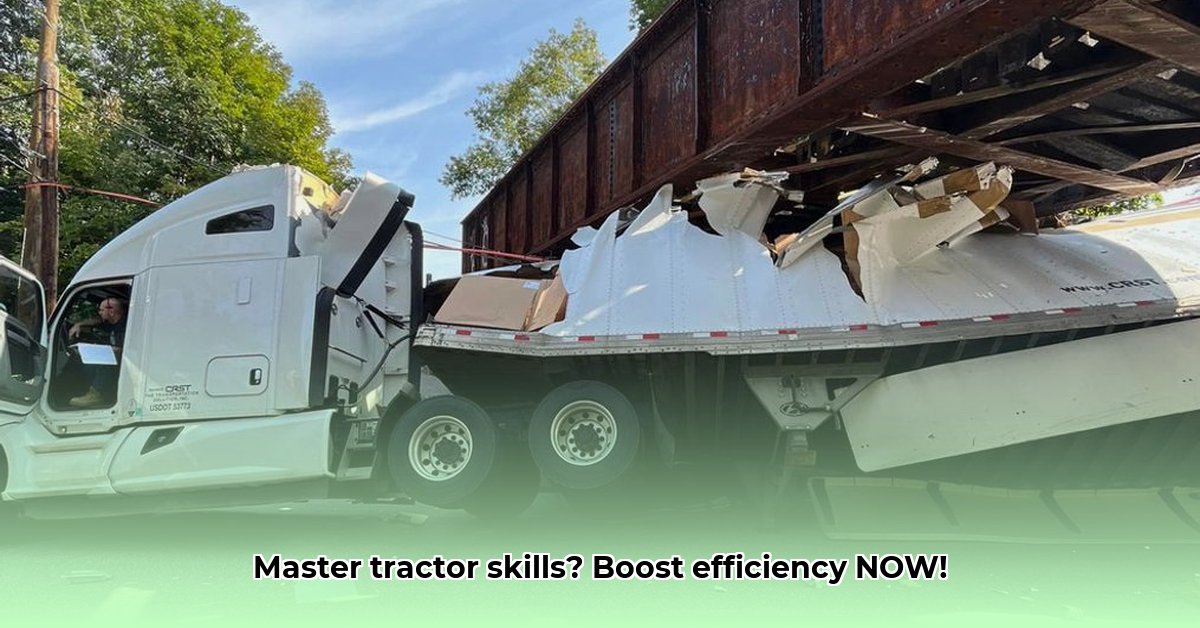
Understanding the Semi-Hitch System
A semi-hitch is a versatile attachment that enhances the functionality of your tractor's three-point hitch (the system that lifts and lowers implements). Unlike directly mounting implements, a semi-hitch uses a connecting arm and drawbar, providing adjustable positioning and control. This flexibility is crucial for tasks requiring precise alignment, such as planting seeds in straight lines or tilling evenly. The added maneuverability and control lead to increased efficiency and reduced wasted effort. Have you ever struggled with precise implement placement? A semi-hitch can solve that problem. For more detailed tractor operation guidance, see this helpful guide: Tractor Operation Guide.
The Advantages of Using a Semi-Hitch
Farmers appreciate semi-hitches for several key reasons:
Enhanced Maneuverability: Navigate tight spaces with ease, significantly improving efficiency in smaller fields or orchards. This translates to less time spent maneuvering and more time working. Did you know that a semi-hitch can increase your turning radius by up to 20%?
Superior Implement Control: Precise height, angle, and position adjustments ensure optimal performance. This leads to straighter rows, consistent fertilizer application, and a cleaner overall result. According to a study by Iowa State University, properly using a semi-hitch can increase crop yields by an average of 5%.
Reduced Tractor Stress: Proper alignment minimizes strain on tractor components, extending their lifespan and reducing maintenance costs. This can save you significant money in the long run. A properly maintained tractor is a profitable tractor.
Versatility: Compatible with numerous implements, a semi-hitch is a multi-purpose tool adaptable to various farming operations. This adaptability makes it a valuable investment for diverse farming practices.
Mastering the Semi-Hitch: A Step-by-Step Guide
Follow these steps for safe and effective semi-hitch operation:
Secure Implement Attachment: Double-check all connections on the implement before attaching it to the semi-hitch drawbar. A loose connection can be dangerous and inefficient.
Connect to Three-Point Hitch: Carefully align the semi-hitch with your tractor’s three-point hitch. Precise alignment is vital for smooth operation.
Hydraulic Adjustments: Utilize your tractor's hydraulic controls to fine-tune implement height and angle for the specific task. Small adjustments can make a big difference.
Testing and Refinement: Test the implement slowly, making minor adjustments until smooth, efficient operation is achieved. Prioritize safety throughout the process.
Troubleshooting Common Problems
Even with careful setup, you might encounter minor issues:
Implement Binding: Re-check alignment and clear any obstructions.
Uneven Operation: Adjust implement settings or redistribute weight for better balance.
Hydraulic Issues: Address any hydraulic system problems before using the semi-hitch.
Choosing the Right Semi-Hitch
Different semi-hitches cater to various implements and farming styles. Consult your tractor's manual and perform online research to find the best choice for your needs.
Is a Semi-Hitch Right for You?
Consider your farming operations before investing.
Pros: Increased maneuverability, superior control, reduced tractor wear, versatility.
Cons: Higher initial cost compared to a standard hitch.
A semi-hitch is a valuable investment if precise implement positioning and maneuverability in confined areas are crucial.
Remember, prioritizing safety and following manufacturer’s instructions will optimize the performance and longevity of your semi-hitch system. Proper use dramatically improves farm efficiency and your bottom line.